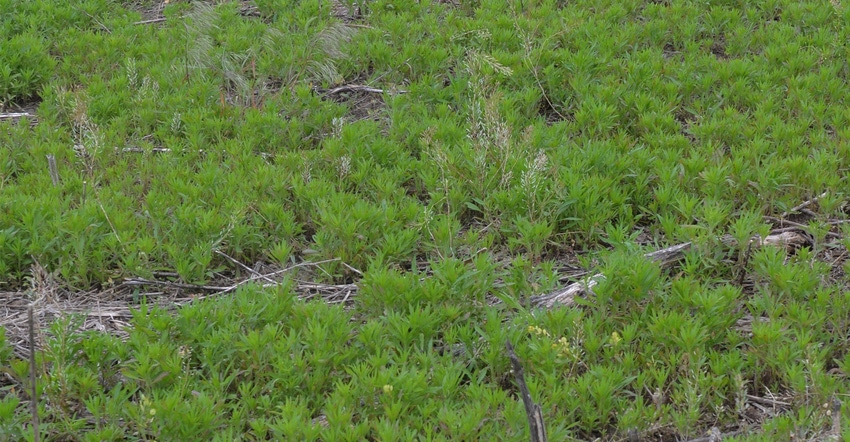
Among the erosion, debris and wreckage left in the wake of major flood events, weeds may be one of the last things growers affected by flooding are concerned about.
However, many species of weed seed still are viable after being carried through floodwaters, and some may have been transported many miles, introducing them to new fields and pastures.
Fortunately, not many annual weed species had emerged at the time of flooding — except for a few winter annuals. This includes Nebraska's No. 1 problem weed, marestail.
"Marestail seeds generally fall on the ground, and it's a parachute kind of structure that can be carried by wind and water," says Amit Jhala, Nebraska Extension weed management specialist. “They fall on the ground and can germinate. That's why we already have a lot of marestail problems this year. Plus, we have a lot of moisture due to flooding and adequate temperature for marestail germination. I've received several calls on how to control marestail in corn and soybean."
However, marestail can germinate in fall and early spring, and some populations can even emerge in summer.
"That's why marestail is difficult to control,” Jhala says. “A new population of marestail can emerge nine out of 12 months of the year. It's not just a winter annual, but also a summer annual."
In addition, several marestail populations in Nebraska are resistant to glyphosate and ALS-inhibiting herbicides.
If marestail wasn't controlled by a preplant burndown, Jhala notes there are a few options, although not as effective as upfront control. This includes a postemergence application of dicamba (if growers planted dicamba-resistant soybean or corn).
PPO inhibitors can be used as an earlier postemergence application when marestail is less than 6 inches tall, and Liberty (glufosinate) can be applied in LibertyLink soybean or corn when marestail is less than 4 inches tall.
Fortunately, because of the timing of this year's flood, not many other species of annual weed seeds were likely spread by floodwaters. However, for perennial and biennial species, it's a different story.
"Mother Nature has a way of taking care of herself," explains Gary Stone, Nebraska Extension educator at the Panhandle Research and Extension Center. “Certain weed species can be viable as many as several years to as many as 20 or 30 years. For plants like Canada thistle and purple loosestrife, if the roots would have been dislodged and carried away, they can grow back from the root. Purple loosestrife is generally found in riparian areas and can easily move by plant parts."
Other potential problem weeds include musk thistle, sericea lespedeza, spotted and diffuse knapweed, phragmites, and absinthe wormwood.
In many cases, it likely won't be until later this fall or even next spring that growers will be able to identify them. Certain perennial weed species, such as Canada thistle, are best controlled in fall. The same is true for biennials such as musk and scotch thistles, which will germinate and be in the rosette stage in fall.
However, weeds such as purple loosestrife and phragmites, both perennials found in riparian areas, likely won't be identifiable until next spring.
But it isn't just water that can transport weed seeds. While numerous people and organizations have generously donated hay and forage for those affected by flooding, there is a chance that weed seeds can be brought in with hay from outside the state — as was the case with absinthe wormwood.
"Absinthe wormwood originated in the northern Panhandle,” Stone says. “Two years ago, a county weed superintendent identified it on a ranch, and asked the rancher if he had bought any hay from out of state. He said he had bought some from North Dakota. That shipment had absinthe wormwood in it. We're very grateful for other states providing forage for farmers and ranchers affected by flooding, but we've got to be careful we aren't bringing in weeds from out of state."
About the Author(s)
You May Also Like






